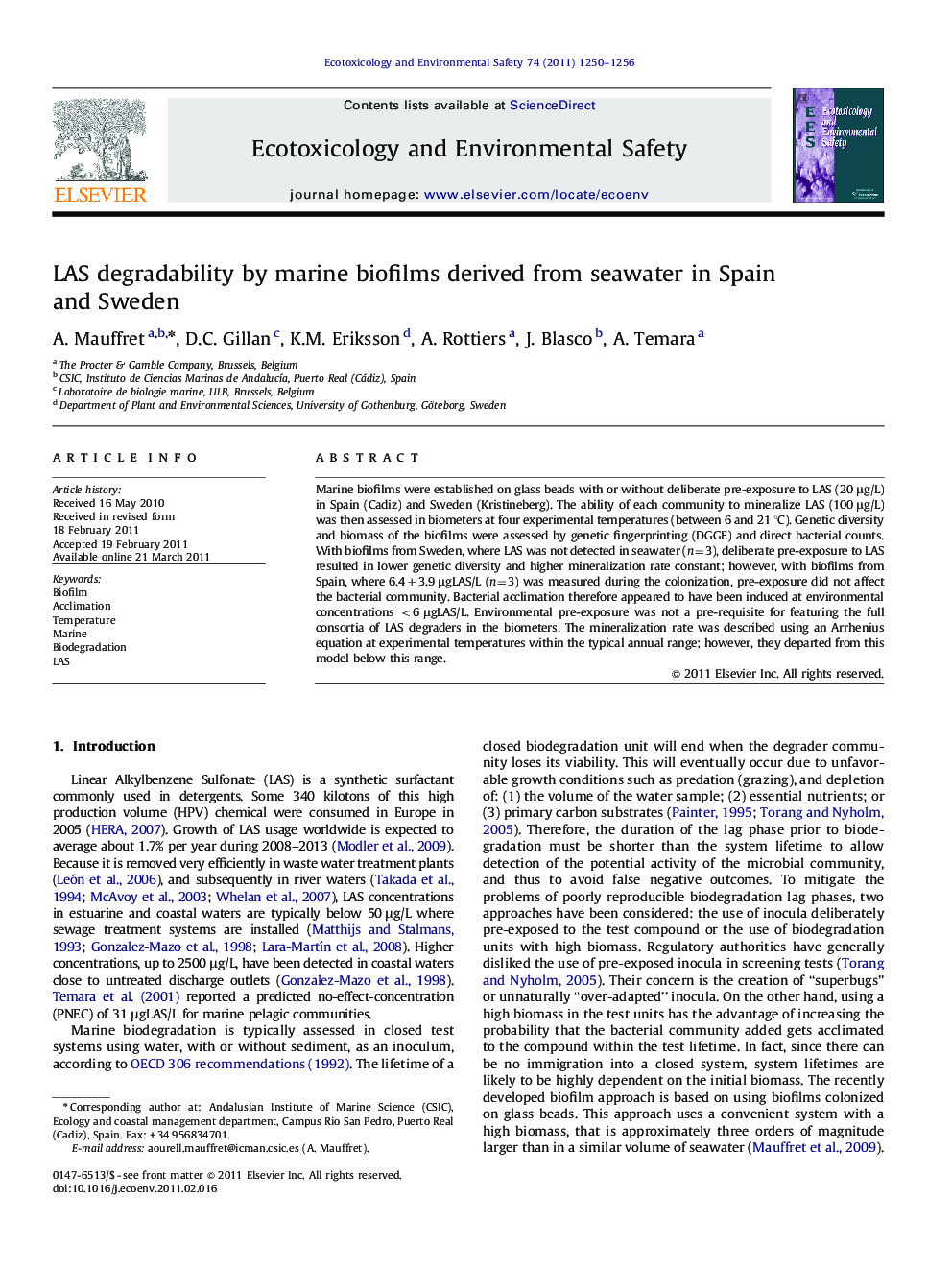| Article ID | Journal | Published Year | Pages | File Type |
|---|---|---|---|---|
| 4421202 | Ecotoxicology and Environmental Safety | 2011 | 7 Pages |
Marine biofilms were established on glass beads with or without deliberate pre-exposure to LAS (20 μg/L) in Spain (Cadiz) and Sweden (Kristineberg). The ability of each community to mineralize LAS (100 μg/L) was then assessed in biometers at four experimental temperatures (between 6 and 21 °C). Genetic diversity and biomass of the biofilms were assessed by genetic fingerprinting (DGGE) and direct bacterial counts. With biofilms from Sweden, where LAS was not detected in seawater (n=3), deliberate pre-exposure to LAS resulted in lower genetic diversity and higher mineralization rate constant; however, with biofilms from Spain, where 6.4±3.9 μgLAS/L (n=3) was measured during the colonization, pre-exposure did not affect the bacterial community. Bacterial acclimation therefore appeared to have been induced at environmental concentrations <6 μgLAS/L. Environmental pre-exposure was not a pre-requisite for featuring the full consortia of LAS degraders in the biometers. The mineralization rate was described using an Arrhenius equation at experimental temperatures within the typical annual range; however, they departed from this model below this range.
